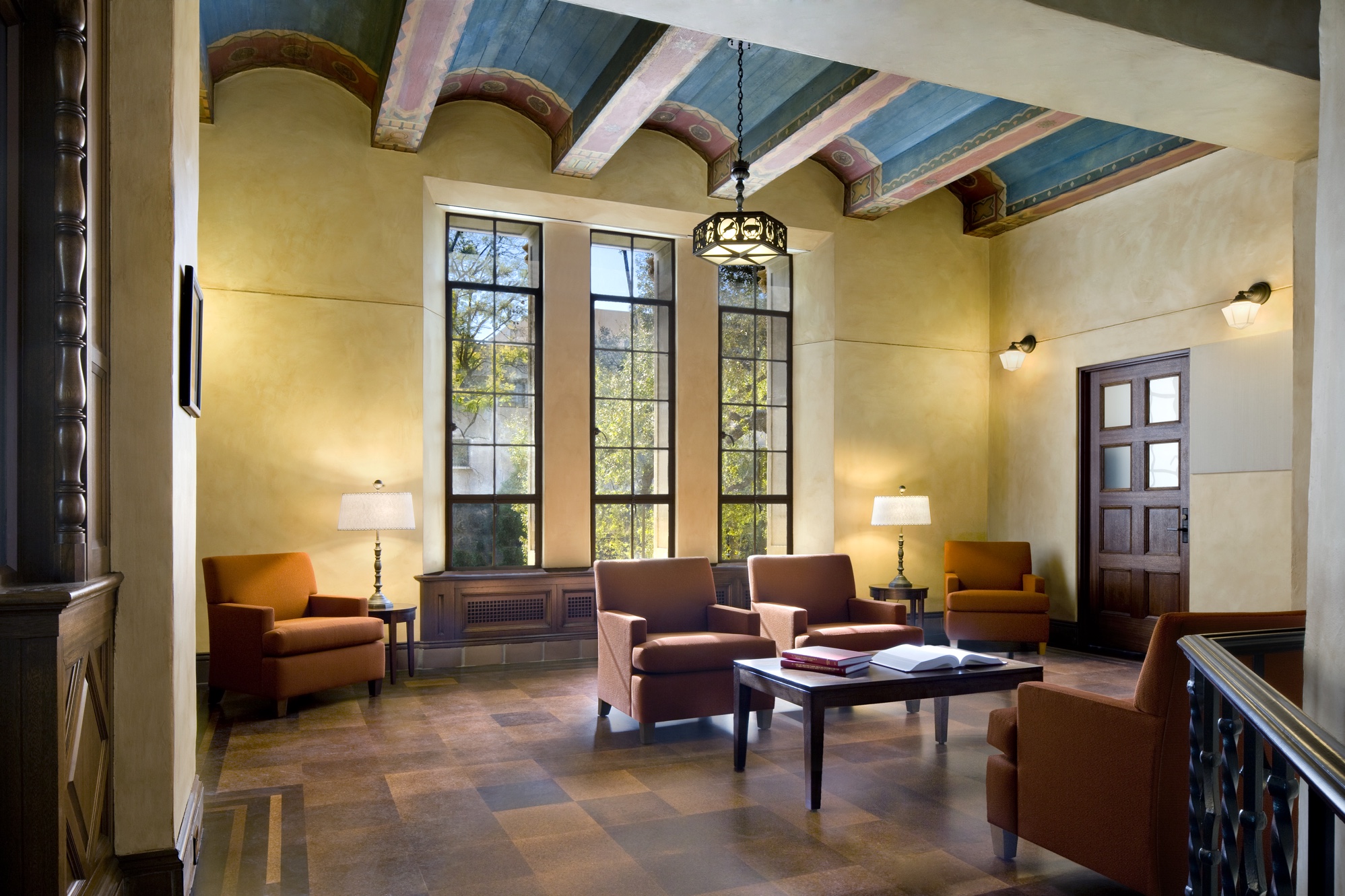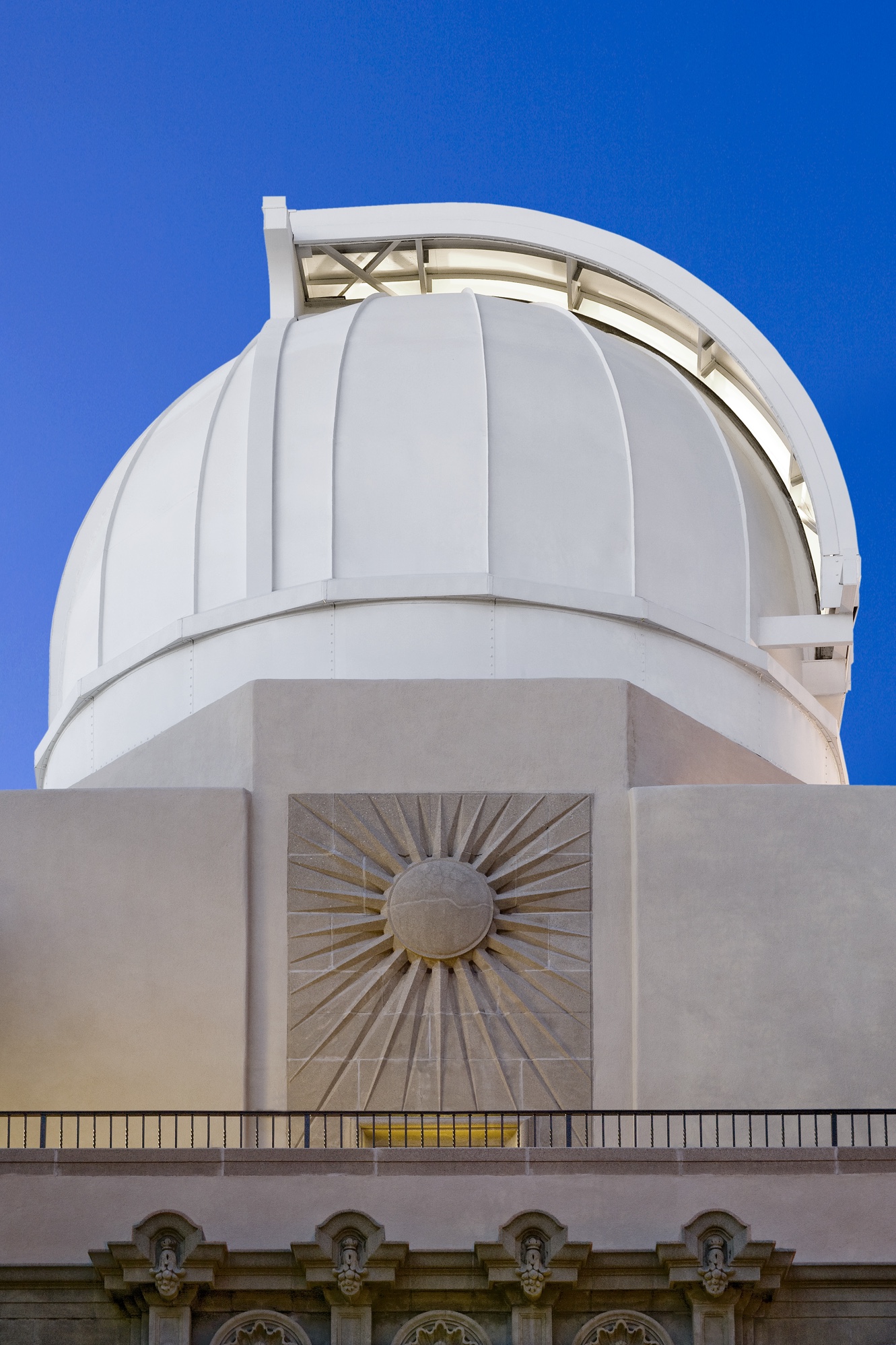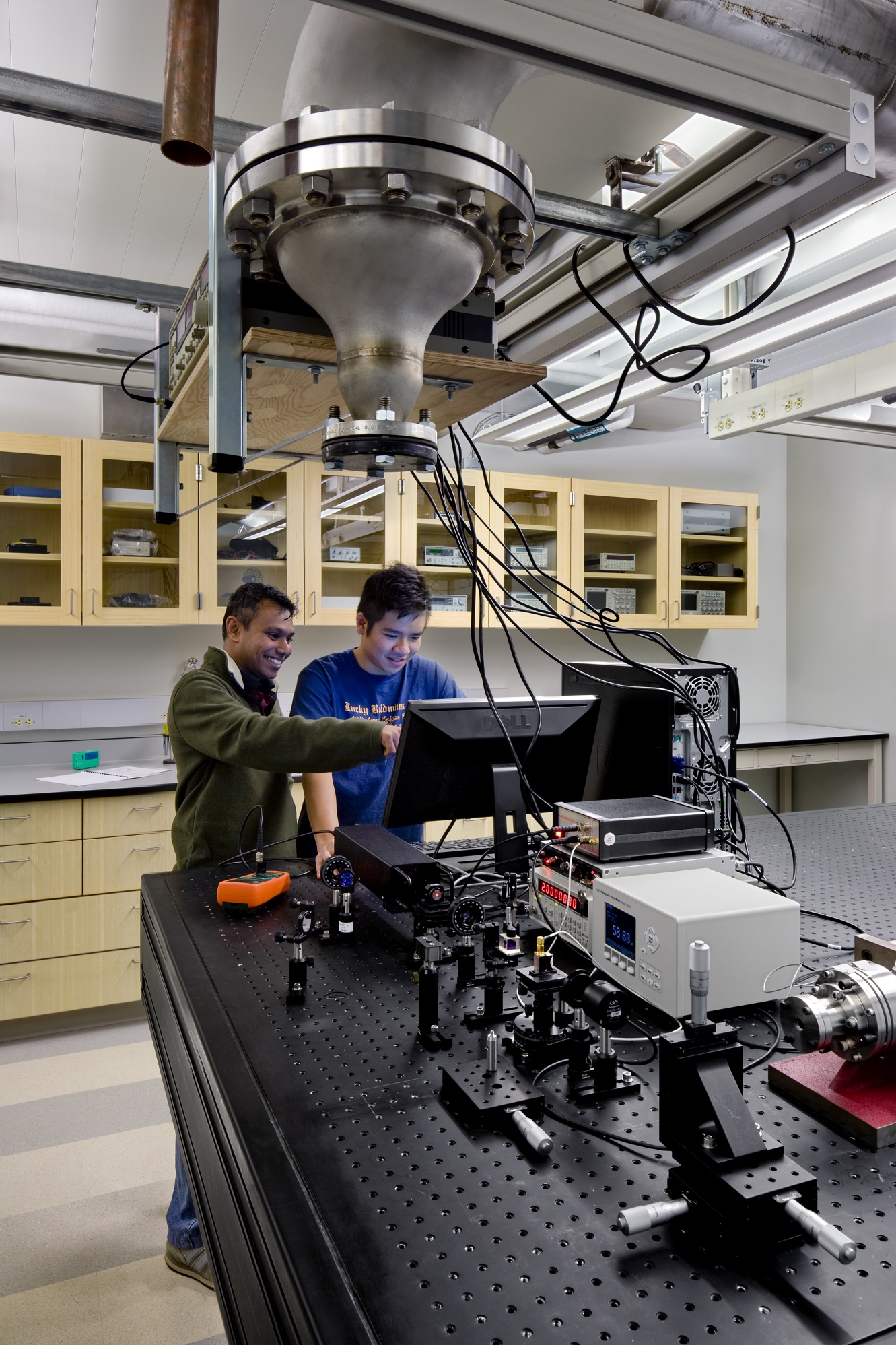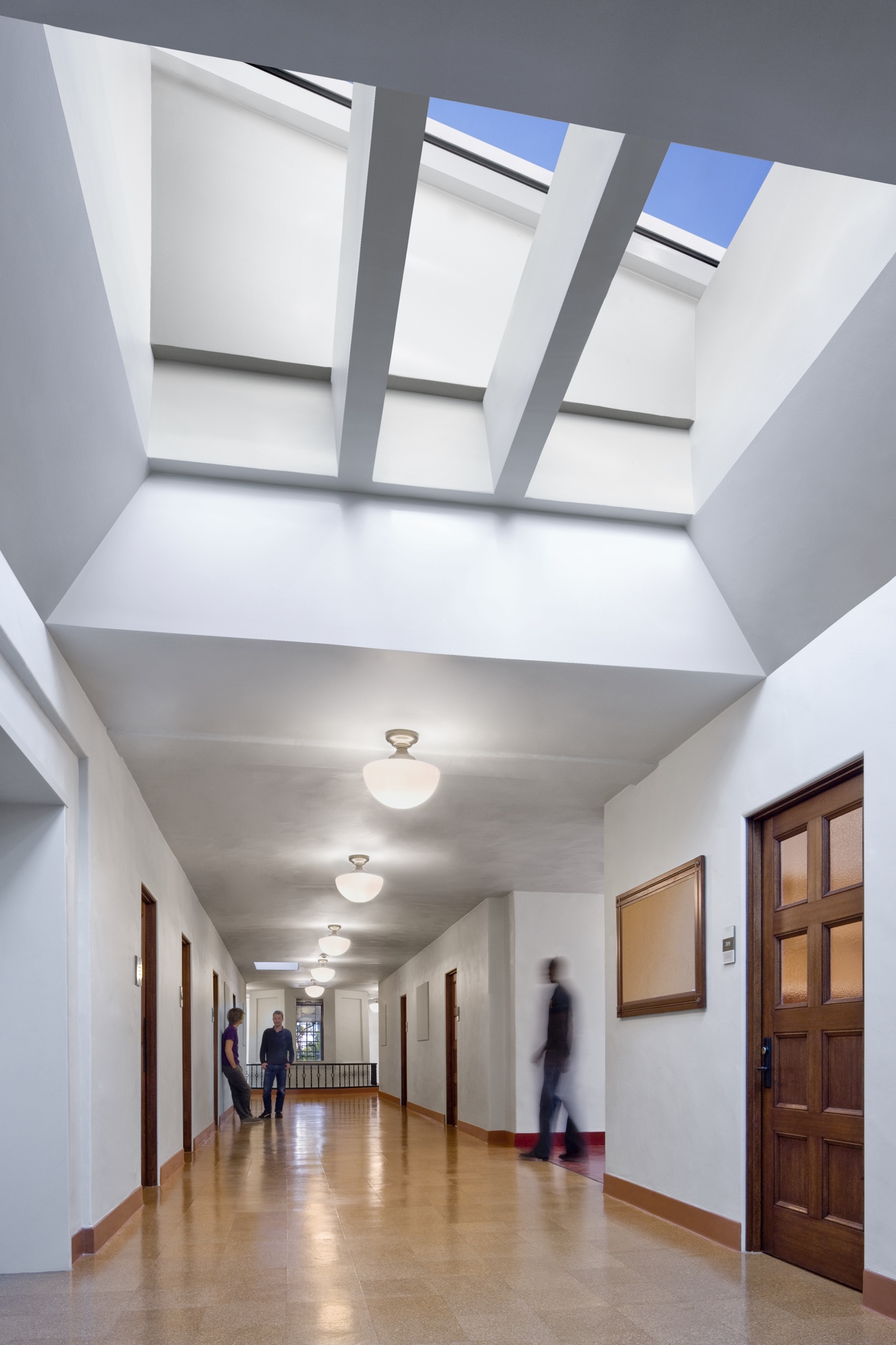











Linde + Robinson Lab
The building that had operated as the astronomy department at CalTech for the first 80 years of its life was to be converted to a laboratory and research center focus on the terrestrial issues of climate and environment. The biggest challenge was how to insert a first-of-its kind modern laboratory into a historic building. In addition, the building is a prominent anchor to the campus, located at the corner along a major public way.
The new scientists wanted to remove the defunct celeostat telescope to attain more floor area, and to place the laboratories on the first and second above-grade floors, instead of on the three floors below grade level, where they were located. This move, however, threatened to destroy the historic integrity of the building.
Once scientists were convinced the celeostat telescope, a prominent exterior feature of the building, could be restored and repurposed, they embraced the idea of using it for their research. This became an exciting turning point, as they began to fully appreciate the building’s significance. The scientists also agreed to retain the labs in the three below-grade levels, allowing the two above-grade floors to remain as historic offices, lounges, library and classrooms, which was a significant benefit for the building.
The rehabilitated facility is a poster child for the sustainable adaptation of unique buildings for new uses. As befits a center for environmental sciences focused on studying the global environment, the lab is the first historic laboratory building in the U.S. to be certified LEED Platinum.
As project principal, Aaron was responsible for overseeing the execution of the project, the project manager, and a complex consultant team, including mechanical, electrical and structural engineers, a daylighting consultant, telescope rehabilitation consultant, as well as the scientist. The entire team was committed to the highest level of sustainability.
Architect of Record:
Architectural Resources Group
Photo credits:
David Wakely Photography

